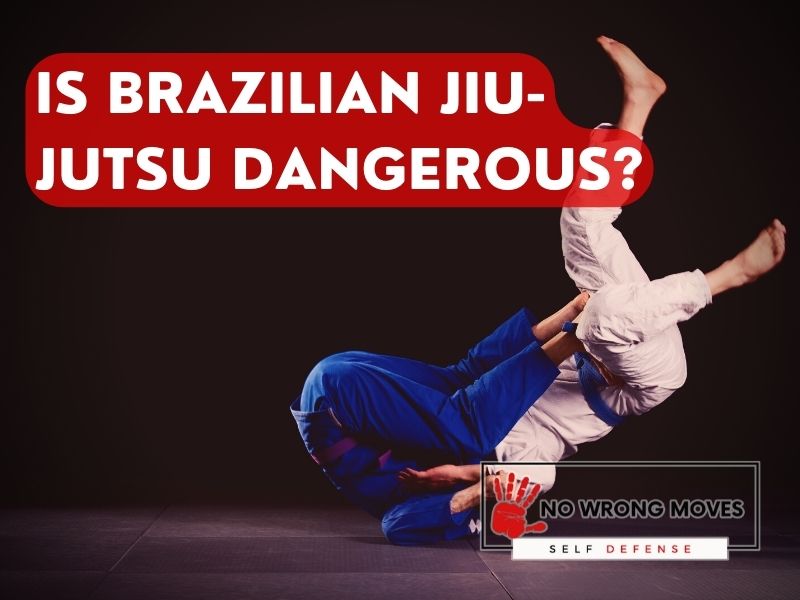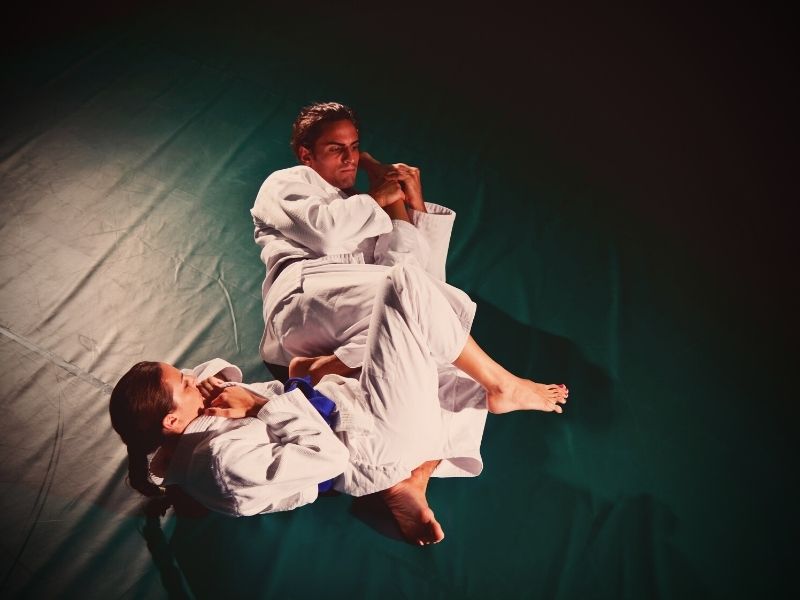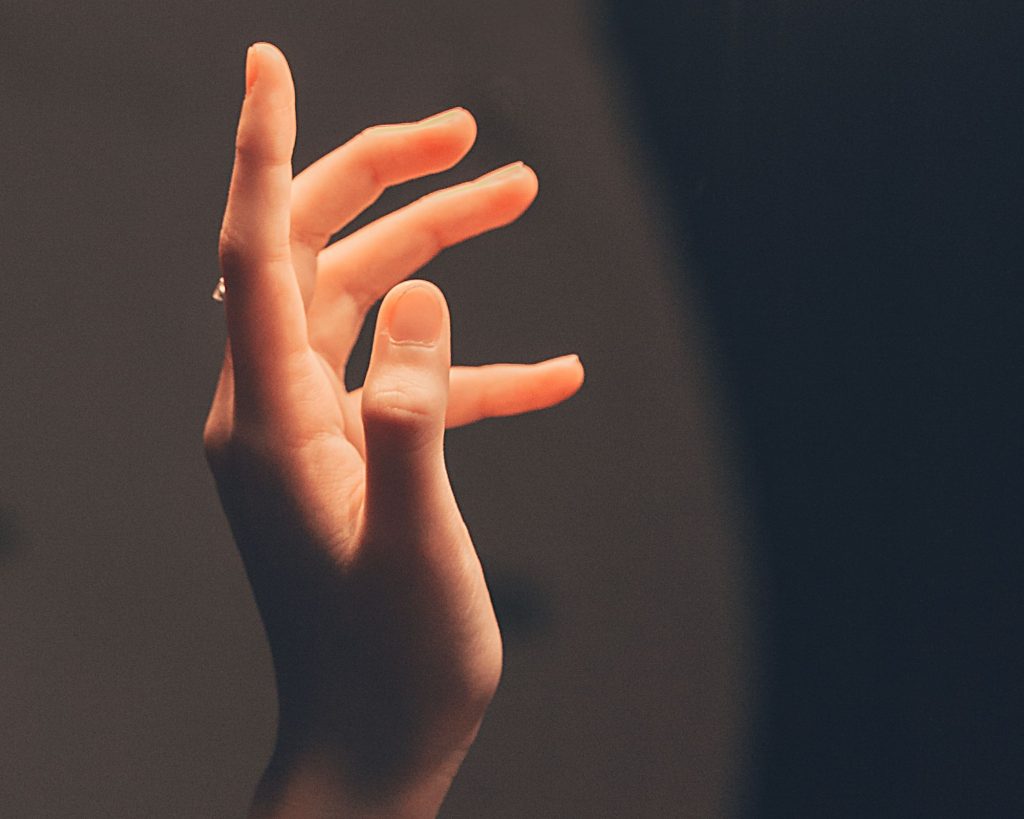
If you've been considering Brazilian jiu-jitsu for self-defense, then rest easy; you're not alone. It's a wonderful martial art that has captivated millions of people all over the world.
Though, you've likely wondered at some point if it's dangerous or not. All those nasty-looking grapples and submission holds look like wonderful recipe for a good fracture or 11, after all.
If you're eager to find out whether BJJ is safe for you or not, then don't worry; it's a perfectly reasonable thing to be curious about.
Many people have wondered about this before taking on BJJ--or any martial art--as a hobby, including us! And don't worry, we'll tell you exactly if it's dangerous or not.
What exactly is BJJ?

Brazilian jiu-jitsu is a martial art that emphasizes grapples and submission holds. These are used in conjunction with principles like leverage and weight distribution to bring a fight into a more favorable position for you, negate your opponent's strength, and prevent them from moving.
Compared to other martial arts, BJJ doesn't teach you much in the way of hitting your opponent, if at all. As a matter of fact, punches, kicks, and other similar attacks aren't even allowed in BJJ. Techniques rely more on ground work, and that's where fighters spend most of their time in bouts.
One of its key tenants is that anyone can learn it, and even better, anyone can use it to defeat even a larger, stronger opponent. This has made it a staple for anyone looking into self-defense.
How dangerous is BJJ?

Brazilian jiu-jitsu is a relatively safe combat sport. The brutal nature of its bouts have led some to believe that it is dangerous at its core, but what should be kept in mind is that when practiced safely and responsibly, Brazilian jiu-jitsu is no more dangerous than any other martial art.
To that end, you can rely on your instructors to always prioritize your safety first and foremost. They will diligently ensure that guidelines are followed, make certain that all equipment and gear are in good condition, and pair jujitsukas who are of similar level and ability when sparring.
In fact, studies show it might even be safer than most. There tends to be a lot of variability in terms of the research here, and it's difficult to find one conclusive answer.
Generally, however, BJJ is less accident-prone than other combat sports, like boxing, kickboxing, muay thai, and MMA. And even when these accidents do happen, they don't tend to be life-threatening or life-altering.
When you think about it, this actually makes a fair bit of sense. The lack of powerful, explosive moves, like punches and kicks, means a significantly reduced chance of physical trauma. So rest easy; BJJ is harsh, but it's not anywhere near as dangerous as it may initially seem.
The Most Vulnerable Body Parts in Brazilian Jiu-Jitsu

Hands, feet, elbows, and knees are among the most commonly injured areas of the body in Brazilian jiu-jitsu. If you're looking to take your safety in the dojo one step further--and you should be proud of yourself if you are!--then be especially cautious when dealing with these body parts.
For specific statistics, McDonald et al.'s study delves into deeper detail on just how often these joints get damaged.
The hands and feet are the most commonly injured body parts, accounting for a quarter of all injuries (25.1%, to be specific). Most of these were hyperextensions as well as jammed fingers and toes.
At second place are the elbows and knees, which were 19.7% of injuries. Many of these were also hyperextensions, but knee and elbow pain were also frequently mentioned.
These body parts aren't the only ones that can fall victim to hyperextensions though. Your shoulders are also vulnerable to them, albeit not quite as much. On top of that, they can also be affected by strains, ligaments, and tendon tears.
Other areas you should watch out for are the back and torso, which are vulnerable to disc injury and chest pain. Though not quite as susceptible to damage, they still do take their fair share of punishment.
The Most Common Injuries Sustained In Brazilian Jiu-Jitsu

Jammed fingers and toes are the most common injury in BJJ, according to the same study from McDonald et al., if not entirely due to how prevalent finger and toe injuries are in the first place.
As mentioned prior, hyperextensions are also commonplace. These occur when a joint is forcibly moved far beyond a normal and healthy range of motion, which typically happens in submission holds.
Cauliflower ear, or "hematoma auris," is a particular unsavory instance, a deformity caused by repeated trauma to the ear. It does just about what you'd expect: blood clots pool up inside your ear, creating blockage and causing your ears to form lumps.
Finally, there are sprains. These are painful tears in your ligament fibers, the things that keep your bones neatly attached together.
There are other familiar injuries in BJJ, like meniscus tears and bone fractures, but they fall secondary in prevalence to hyperextensions, jammed fingers, and the like. Extra precautions to prevent these will likely save you a lot of time and energy somewhere down the line.
Additional Risks Involved When Practicing Brazilian Jiu-Jitsu

Although not a joint, a fair amount of damage also involves skin infections, a notorious one being ringworm. Most recognizable by the itchy circular rash it creates in the skin (hence the name), this nasty disease is spread through the floor or close contact with someone already infected with it.
Other such dangers include staphylococcus infections, or simply staph; impetigo; and folliculitis. These kinds of infections can be drastically negated simply by practicing good hygiene, so always be sure to shower well, wash diligently, and clean your equipment.
These infections are not going to be as painful for you to endure as something like a fractured ankle, but they can still put a dent on your BJJ career, and it's still important to be aware of them.
How To Stay Safe When Practicing Brazilian Jiu-Jitsu

There are always going to be certain risks when practicing Brazilian jiu-jitsu, but you should still do your best to minimize them. And to do that, you'll need to make sure to:
- Follow guidelines and instructions set by your instructor;
- Always maintain proper form;
- Wear proper protective gear, such as knee pads and elbow pads;
- Warm up before the start of every session;
- Listen to your body, making sure not to push through any pain you feel while injured;
- Practice good hygiene and regularly disinfect your training equipment;
Keeping these in mind should negate much of the risk involved in your training sessions. If you follow each of these diligently, then you'll be able enjoy your time at the dojo without worrying much about harm being done to your body.
The Wrap-Up
BJJ is about as tough as you'd expect a combat sport to be, and there will always be a chance of accidents in your path towards mastery. But rest easy in the knowledge that such situations can be mitigated by proper precautions; they are rare and typically not serious otherwise.
BJJ is a dynamic sport that involves lots of intense struggle. At the end of the day though, it's still a great, safe, and fun sport, one that I'd definitely recommend, and one that I can almost wholeheartedly say you won't regret getting into.
Check out how BJJ compares to Aikido here!
[author-box-jpx-fitness]

